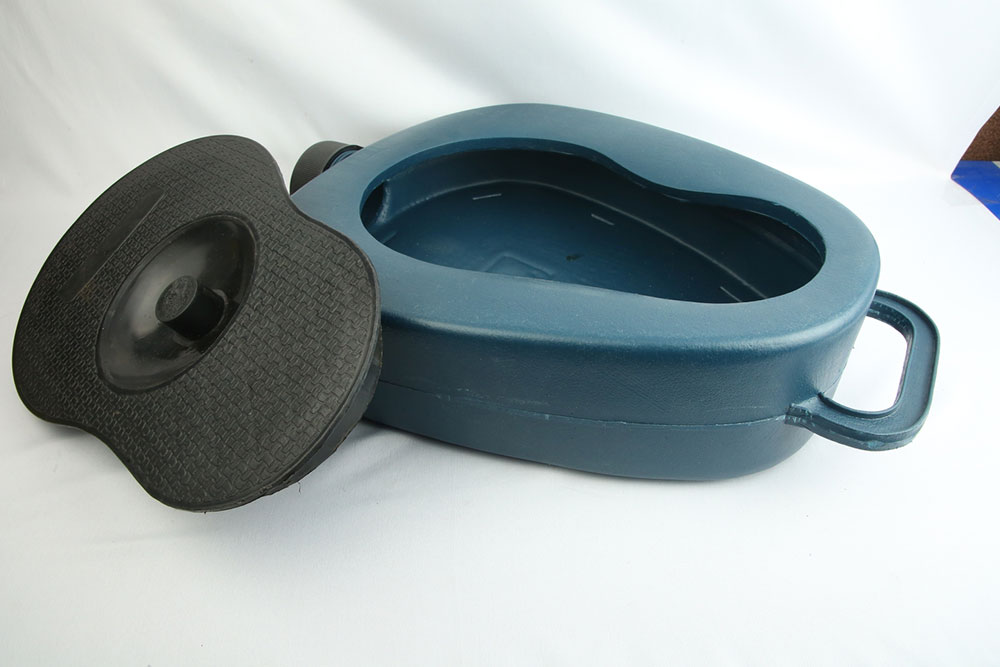
Key things to know about bedpans
Health problems usually worsen with age, and many become bedridden. Even young people sometimes find it hard to walk after surgery or illness and are advised strict bed rest. Individuals who suffer from immobility in such cases cannot visit the bathroom. As a solution, healthcare professionals recommend using a bedpan. This post discusses what a bedpan is, its types, pros and cons, and other essential details that can be useful.
What is a bedpan?
Bedpans help fulfill the toileting needs of seniors and those confined to the bed because of an illness or surgery. They can be used at home or in a healthcare facility for collecting urine and fecal discharge. Bedpans are often manufactured using glass, stainless steel, metal, ceramic, or plastic, but stainless steel is among the most commonly used materials. They are durable, lightweight, and convenient to use.
Types of bedpans
Different types of bedpans are available, which sometimes makes choosing difficult for seniors. Here is a quick overview of the options to help one make an informed decision:
- Standard bedpan
The standard bedpan is a flat, shallow pan with the traditional design and structure. It has a raised back to offer support and prevent spillage. It is convenient for individuals with minimal mobility or those who can sit up in bed. - Disposable bedpan
Disposable bedpans are constructed using paper or other disposable materials. They are often used in healthcare settings or during travel and are convenient for one-time use. The primary benefit is that they reduce the hassle of cleaning as they can be discarded once used. - Fracture bedpan
The fracture bedpan is similar to the standard type. The only major difference is that it has a tapered end. It suits people with hip fractures and injuries that cause reduced mobility. - Bariatric bedpan
These are suitable for people with larger bodies. Their deeper and broader structure distinguishes them from the standard bedpans. Bariatric bedpans provide more support and convenience to people who need more space. - Female urinal
The female urinal is not technically a bedpan but a specialized device for women who find using the standard bedpan difficult. It has a unique angle and shape for easy use.
One should choose the right type of bedpan depending on the patient’s needs. It is advisable to consult an expert if someone is unsure.
Pros and cons
Bedpans provide several benefits, some of which are listed below:
- Cost-effective and economical
- Useful for people with mobility issues who need to urinate or dedicate urgently
- Helps maintain the patient’s cleanliness and health
- Makes disposing of waste simple and convenient for both the patient and caregiver
- Helps provide perineal wash
- Helps with bowel and bladder training
- Provides convenience, ease, and comfort
Bedpans also have a few drawbacks, which one must know:
- Bedpans come in different shapes and sizes and do not always fit perfectly, making them difficult to use.
- They may leak if not positioned correctly.
One must always consider the pros and cons before considering a bedpan. It is also crucial to speak to healthcare professionals about the right way to use it. Experts recommend keeping a few things ready before using the bedpan, such as wipes, a towel, toilet paper, disposable gloves, and a basin with warm water. This helps maintain cleanliness and hygiene.
Cost of bedpans
The cost of a bedpan can vary depending on its material, type, and brand. These devices are available with various sellers, online and offline. One should compare the prices at different retailers before buying.
Bedpan alternatives
Healthcare providers may sometimes recommend alternatives to bedpans. Here is a quick list of some of the most common bedpan alternatives:
- Commode chairs
These are robust and sturdy portable toilets that find their use outside the bed. - Catheters
Many catheters can be used intermittently, externally or internally. They are mostly used for draining urine. - Adult diapers
Adult diapers are suitable for seniors or adults with mobility issues. The disposable varieties are excellent for one-time use. - Portable urinals
Different types of portable urinals are available for both men and women. They are an alternative to catheters.
A bedpan is an easy and convenient device for collecting urine or stools when someone develops mobility issues due to surgery, illness, or age. Stainless steel bedpans with a firm grip handle and a lid are usually the best. This design helps avoid contamination of the hands and surroundings. Caregivers and patients should maintain hygiene when using bedpans. The device should be purchased after understanding the patient’s specific needs and discussing them with a professional.




